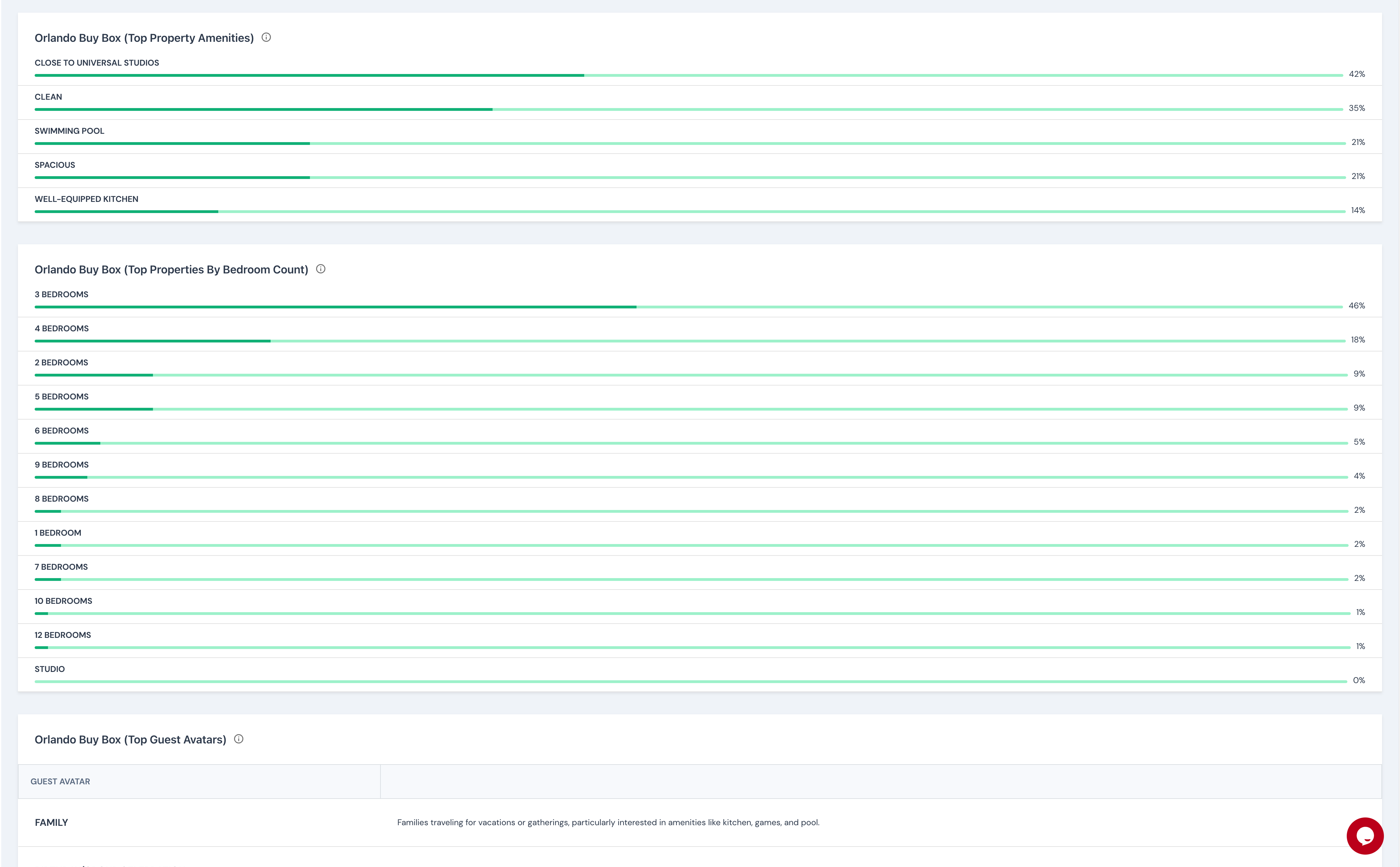Dynamic Pricing Strategies for Maximum Revenue
Learn how to implement data-driven pricing strategies that respond to market conditions and maximize your property's earning potential.

Dynamic Pricing Strategies for Maximum STR Revenue
Fine-tune your pricing strategy to capture more bookings and maximize revenue. Learn how to use STRProfitMap's analytics to implement dynamic pricing that responds to market conditions and demand patterns.
What You'll Learn in This Guide
- How to identify the optimal base price for your property
- Techniques for adjusting prices based on seasonal demand
- Strategies for weekend, holiday, and special event pricing
- Methods for responding to competitive pressures
- Automated pricing tools that integrate with STRProfitMap data
The Science of STR Pricing
Dynamic pricing isn't just about charging more during peak seasons. It's a sophisticated strategy that balances occupancy rates with average daily rates to maximize your total revenue throughout the year.
The Revenue Equation
Your total revenue is determined by: Revenue = Occupancy Rate × Average Daily Rate × Number of Days
The key insight: There's an optimal price point that maximizes this equation. Price too high, and your occupancy will drop disproportionately. Price too low, and you'll be fully booked but leaving money on the table.
Real Investor Case Study
"When I first started, I kept my 3-bedroom cabin priced at $199 consistently. Using STRProfitMap's analytics, I discovered my market had 8 distinct pricing seasons. I implemented dynamic pricing ranging from $159 in low season to $379 during peak holidays. My annual revenue increased by 47% while my occupancy actually improved slightly from 72% to 75%."
- Jennifer L., Mountain Property Owner
Setting Your Base Price Strategy
1. Competitive Market Analysis
Use STRProfitMap to analyze comparable properties:
- Filter for properties with similar bedroom count, location, and amenities
- Note the range of pricing across similar properties
- Analyze the occupancy rates at different price points
- Identify the "sweet spot" where pricing optimizes both occupancy and rate
2. Quality Adjustment Factors
Adjust your base price relative to competitors based on:
- Property Condition: Newly renovated properties can command 15-25% premium
- Amenity Differentiation: Each premium amenity (hot tub, pool, etc.) adds 5-15%
- View/Location: Prime views or locations can justify 10-30% higher pricing
- Reviews/Ratings: Properties with 4.8+ ratings earn approximately 12% more than those with 4.5
- Professional Photography: Quality listings photos increase bookings by up to 24%
3. Expense Coverage Check
Ensure your pricing strategy covers your costs:
- Calculate your break-even occupancy rate at different price points
- Factor in all expenses: mortgage, utilities, cleaning, supplies, maintenance, etc.
- Add your target profit margin
- Compare this minimum viable price with your market analysis results
Implementing Seasonal Pricing Adjustments
1. Demand Pattern Analysis
Use STRProfitMap's seasonal data to identify demand patterns:
- High Season: Increase prices by 30-80% from your base rate
- Shoulder Season: Increase prices by 10-30% from your base rate
- Low Season: Decrease prices by 10-25% from your base rate
- Dead Season: Decrease prices by 25-40% or consider alternate strategies
2. Day-of-Week Adjustments
Adjust for predictable weekly patterns:
- Weekend Premium: Fridays/Saturdays typically command 20-40% higher rates
- Sunday Strategy: Often better to discount Sundays by 10-20% to extend weekend stays
- Weekday Rates: Generally 10-30% lower than weekend rates
- Minimum Stay Requirements: Consider 2-3 night minimums during high demand periods
3. Special Events & Holidays
Leverage STRProfitMap's local event data:
- Identify major local events (festivals, conferences, sports) that drive demand
- Apply 50-200% premiums during peak events
- Extend minimum stay requirements during high-demand events
- Create custom seasonal rules for recurring annual events
Pro Tip: The Last-Minute Pricing Strategy
Using STRProfitMap's market occupancy forecasts:
- High Occupancy Market (85%+): Increase prices by 10-15% for last-minute bookings (7-14 days out)
- Balanced Market (65-85%): Keep prices stable, but remove any minimum stay requirements
- Low Occupancy Market (below 65%): Implement graduated discounts starting at 10% (14 days out) and increasing to 25% (3 days out)
- Implement Stop-Loss: Set a minimum price below which you won't go, even for last-minute bookings
Competitive Response Strategies
1. Market Saturation Response
Adjust your strategy based on market supply conditions:
- Emerging Market (few listings): Price at a premium while maintaining competitive value
- Growing Market (moderate competition): Price competitively with strategic premiums for differentiators
- Saturated Market (high competition): Focus on property improvements and service to justify rates
- Declining Market (oversupply): Consider longer-term rentals or target niche audiences
2. Monitoring Competitive Changes
Use STRProfitMap's competitive tracking:
- Set up alerts for new listings in your market
- Monitor pricing trends among your competitive set
- Analyze booking patterns to identify successful strategies
- Adjust your pricing in response to major market shifts
Automating Your Pricing Strategy
Pricing Tool Integration
STRProfitMap data integrates with popular dynamic pricing tools:
- Export STRProfitMap analytics to refine your pricing tool settings
- Set base rates informed by STRProfitMap's competitive analysis
- Create custom seasonal adjustments based on historical data
- Implement minimum stay requirements aligned with market patterns
Action Plan: Implementing Your Dynamic Pricing Strategy
- Conduct Market Analysis: Use STRProfitMap to analyze comparable properties and pricing
- Establish Base Rate: Set your foundational price point based on competitive analysis
- Map Seasonal Patterns: Identify high/low seasons and create a seasonal pricing calendar
- Configure Day-of-Week Pricing: Set weekend premiums and weekday adjustments
- Identify Special Events: Mark local events and holidays with special pricing rules
- Develop a Last-Minute Strategy: Create rules for handling unsold inventory
- Set Review Schedule: Plan to review and adjust your pricing strategy quarterly
Next Steps
Now that you understand dynamic pricing strategies, explore these related guides:
Accurate — Actionable — Insightful
Find Hidden Airbnb Gems Others Miss
With STR Profit Map’s in-depth analytics, interactive profit maps, AI-powered buy boxes, and Country Explorer, uncover hidden gems, optimize guest experience, and maximize your STR profits.
